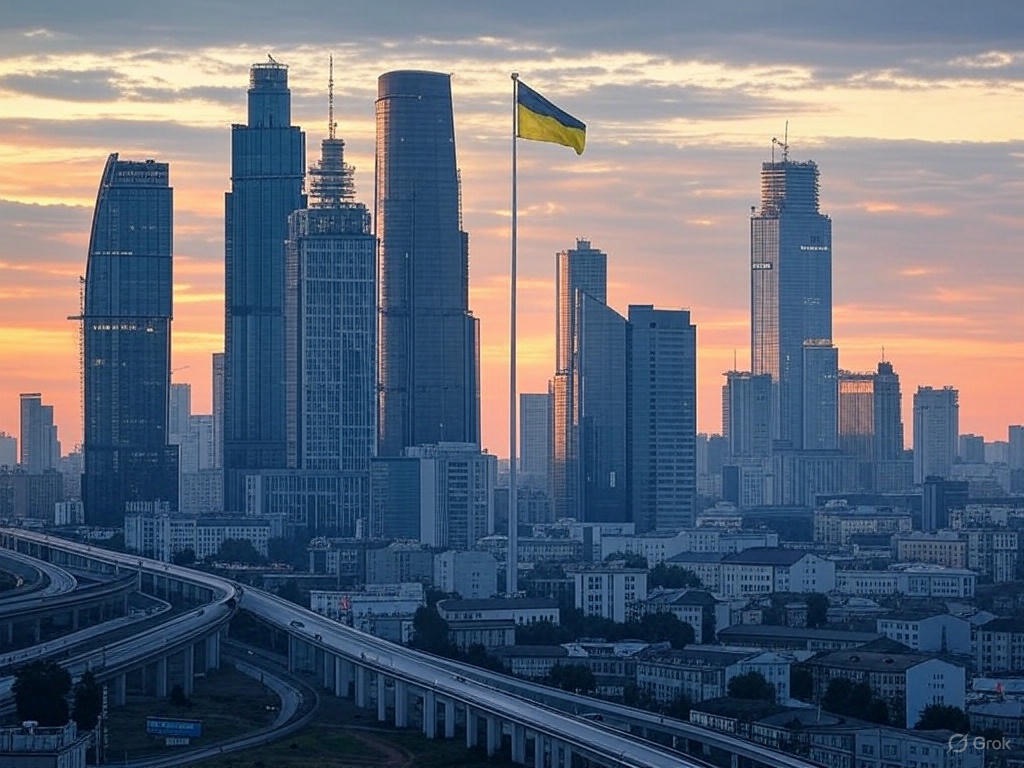Forget slow-moving grids and legacy infrastructure. Africa faces an energy crisis demanding radical solutions – 600 million people remain in the dark, a drag on economies and lives. Traditional grid expansion is failing rural populations. The real action? Decentralized, peer-to-peer (P2P) solar energy trading, supercharged by blockchain. This isn’t just about lightbulbs; it’s about forging new local energy economies, bypassing state failures, and unlocking a multi-billion dollar market ripe for disruption.
The model is simple: households with solar panels sell excess power directly to neighbours using secure, transparent blockchain tokens. This sidesteps unreliable central grids and high transmission costs. Off-grid solar already dominates new connections in Sub-Saharan Africa (55% from 2020-2022). Layering blockchain P2P trading onto this exploding market transforms passive solar users into active energy entrepreneurs. First movers who master this tech in low-bandwidth environments won’t just power homes – they’ll own the future energy networks of a continent.
Target Zones: Where the Opportunity Ignites
The potential isn’t uniform. Focus on markets where high energy poverty meets booming solar adoption and forward-thinking policy.
East Africa: The Proving Ground
Kenya, Tanzania, Uganda, Rwanda are ground zero for off-grid innovation, fueled by mobile money and pay-as-you-go solar.
- Kenya: A leader. ~75% electrification masks deep rural deficits. Its vibrant solar home system market (M-KOPA pioneered half a million installs) and ubiquitous M-Pesa make it prime territory. Blockchain pilots like Hivos’ Kajiado microgrid are already proving P2P trading works – neighbours selling tokenized surplus power, all logged immutably.
- Rwanda: Aggressive state-backed push for universal access by 2030, heavily reliant on off-grid solar. Open to innovative mini-grid and community energy solutions.
- Tanzania & Uganda: Tens of millions unpowered, strong solar players (Fenix, BBOXX). Fertile ground once community energy sales gain regulatory clarity.
West Africa: The Scale Play
This region offers sheer volume, especially in Nigeria.
- Nigeria: The giant prize. Over 90 million lack power, grid users face chronic blackouts. Nigerians spend a staggering $14 billion annually on costly, dirty backup power (generators, kerosene). The addressable market for solar solutions today is estimated at $9.2 billion per year. Government policy supports private mini-grids (up to 100kW license-free), signaling openness. Early movers can partner with the Rural Electrification Agency.
- Ghana: Higher electrification (~85%), but northern regions lag. Stable regulations and successful solar firms (PEG Africa) make it ideal for piloting P2P trading to reach the “last mile.”
- Beyond: Côte d’Ivoire, Senegal show fast-growing solar demand (Zola Electric hit 10k customers in Côte d’Ivoire in year one). Fintech adoption is catching up to East Africa, enabling mobile-based token trading.
Southern Africa: Niche Plays & Grid Edge Innovation
Even developed markets offer unique angles.
- South Africa: Despite ~85% electrification, grid instability (load shedding) and informal settlements create demand. Startups like Zonke Energy are already linking community solar hubs with home systems for P2P trading via mobile apps in townships. Recent licensing of private energy traders signals market opening. P2P can thrive even alongside the grid, enabling neighbour-to-neighbour trading during blackouts.
- Zambia & Zimbabwe: High energy poverty (~70% off-grid in Zambia), unreliable grids. Potential leapfrog markets if policy permits. New solar home system deployments could be networked for trading.
The Playbook: Target high-need zones with strong solar trends and governments allowing private energy participation. These are the regions where P2P networks can root and scale fastest.
The Tech Engine: Blockchain Meets Bootstrapped Grids
Deploying P2P energy trading in rural Africa demands a lean, tough tech stack built for the real world: low bandwidth, intermittent power, and users needing simplicity.
Lightweight Blockchain Backbone
Forget Bitcoin’s energy appetite. This needs energy-efficient, low-data blockchains (e.g., Energy Web Chain, private Hyperledger networks).
- Key Function: Provides a tamper-proof, trusted ledger for every micro-transaction (even cents worth of power). Builds confidence between buyers and sellers without needing a central utility.
- Offline Capability: Nodes must operate in “island mode,” syncing data periodically when connectivity returns. Crucial for unreliable rural networks. Blockchain ensures data integrity even with delays.
Smart Meters: The Gatekeepers
Bi-directional smart meters are non-negotiable. They track energy flow (in/out) and communicate trades to the blockchain.
- Connectivity: Use low-bandwidth IoT tech like GSM/SMS or LoRaWAN, designed for remote areas.
- Automation: Meters trigger blockchain transactions automatically. Energy flows, payment (tokens) flows. Smart contracts can automate buying/selling based on pre-set rules (e.g., “buy if battery <20% and price <$0.15/kWh”).
- Rugged & Affordable: Hardware must be cheap, durable, and tamper-resistant. Projects like SOLshare in Bangladesh pioneered this model, now being adapted for Africa.
Mobile Money & Dead-Simple UI
Blockchain complexity stays under the hood. Users interact via familiar tools:
- Interface: SMS, USSD codes, or basic smartphone apps. Check balance, approve trades, cash out tokens.
- Payment Integration: Seamless conversion between energy tokens and local mobile money (M-Pesa, MTN Money, etc.). Micropayments are critical – blockchain excels here.
- Stable Tokens: Peg tokens to local currency (KES, NGN) or kWh to avoid crypto volatility. Users trade energy value, not speculative assets. The tech provides trust; the user experience provides simplicity.
The Result: A self-contained “internet of energy” for the microgrid. Secure, automated, transparent – empowering communities to manage their own power market with minimal overhead.
Seize the Lead: Why Early Movers Win Big
This sector is nascent. Getting in now offers compounding advantages and locks in long-term value.
Platform Dominance & Ecosystem Lock-In
Energy trading has powerful network effects. First movers establish the platform in a region.
- Standard Setting: Shape local standards, integrate partners (installers, co-ops), gain government endorsements. Become the trusted “community energy bank.”
- Regulatory Influence: Help craft favorable P2P trading rules, creating a moat against latecomers facing established standards.
Technology & Data Moat
Early deployment generates invaluable real-world data.
- Learning Curve: Optimize trading algorithms, refine hardware, build IP. Pioneer reaches version 3.0 while competitors are debugging 1.0.
- Token Standard: If issuing a token, it can become the de facto regional standard for energy value exchange.
Brand Trust & Talent Magnet
Energy is essential; trust is paramount.
- Proven Results: Successful pilot projects build credibility with communities, governments, and funders. Early movers attract the limited pool of blockchain/off-grid energy talent.
- Funding Access: Demonstrable impact attracts grants and low-cost capital from development banks (like the World Bank’s $500M Africa Mini-Grids Program) seeking SDG7 solutions, de-risking the venture.
The Payoff: Converting Africa’s massive spending on inefficient energy (recall Nigeria’s $14B generator habit) into P2P solar networks is a multi-billion dollar revenue play. GOGLA logged 9.5 million solar kit sales in 2022 alone – each a potential network node. Skimming small fees (5-10%) off millions of daily micro-transactions adds up fast. Add revenue from hardware, premium data services, and potentially lucrative carbon credits (blockchain provides verifiable data), and the returns look compelling.
Blueprint for Scale: Sustainable Models, Smart Tokens
A viable business needs robust economics for users, prosumers, and the platform.
Community-Centric Marketplaces
The core model: Operate local energy markets.
- Revenue: Typically a small transaction fee (e.g., 5-10% of kWh traded), enabled by blockchain’s low overhead. Minimal marginal cost once infrastructure is deployed.
- Structure: Can be run by a company or a local cooperative. Expands horizontally, village by village, potentially interconnecting networks over time.
- Partnerships: Scale via solar distributors (bundle trading tech), MFIs (finance systems), telcos (integrate with mobile money).
Smart Tokenomics: Energy as a Digital Asset
Tokens are the engine of trade. Keep it simple and trustworthy.
- Utility Token: Primarily an energy credit pegged to kWh or local fiat (stablecoin). Earn by selling power, spend by buying. Focus on stability, not speculation.
- Incentives (Optional): Reward tokens for grid-balancing behaviour (supplying power at peak times). Governance tokens for community input.
- Funding Mechanism: Token sales can crowdfund initial infrastructure (solar panels, batteries), aligning investor returns with grid performance via transparent on-chain repayment.
Market-Driven Pricing
P2P allows local, dynamic pricing.
- Boundaries: Set price floors (e.g., below generator cost) and ceilings (e.g., near grid tariff) to ensure fairness and value.
- Algorithm: Price adjusts based on real-time supply/demand (sun availability, battery levels). Platform earns more when trading volume is high.
- Future-Proofing: Design models that can integrate with the national grid if/when it arrives (e.g., managing feed-in tariffs).
Unlocking User Value is Key
Sustainability hinges on clear benefits for participants.
- Consumers: Get reliable, affordable power – cheaper than kerosene or generators. Blockchain cuts middleman costs.
- Prosumers: Earn real income from surplus solar power, dramatically improving ROI on their solar investment. This income drives further solar adoption.
- Ecosystem: Build trust so tokens are seen as reliable value, potentially accepted by local merchants, turning clean energy into a local currency.
Navigating Policy for Growth
Scaling requires proactive engagement with regulators.
- Advocacy: Work with governments to create clear rules for P2P trading, framing it as a fast path to electrification and job creation. Leverage existing mini-grid regulations where possible.
- Compliance: Build models that meet consumer protection and tariff standards, ready for wide rollout.
The Final Spark: Powering Futures, Unlocking Value
Decentralized P2P energy trading isn’t just a concept; it’s an executable strategy to tackle one of Africa’s biggest challenges while generating significant returns. By marrying exponential solar growth with the trust and efficiency of blockchain, first movers can build lean, scalable energy networks that empower communities from the ground up.
This isn’t just about delivering electrons; it’s about creating economic lifelines, fostering local entrepreneurship, and bypassing the failures of centralized systems. The technology is ready, the market need is overwhelming, and the policy environment is opening. For investors with foresight and nerve, the opportunity is clear: fund the infrastructure that turns sunshine and code into Africa’s next utility – decentralized, democratic, and definitively profitable.
Disclaimer: Important Legal and Regulatory Information
This report is for informational purposes only and should not be construed as financial, investment, legal, tax, or professional advice. The views expressed are purely analytical in nature and do not constitute financial guidance, investment recommendations, or a solicitation to buy, sell, or hold any financial instrument, including but not limited to commodities, securities, derivatives, or cryptocurrencies. No part of this publication should be relied upon for financial or investment decisions, and readers should consult a qualified financial advisor or regulated professional before making any decisions. Bretalon LTD is not authorized or regulated by the UK Financial Conduct Authority (FCA) or any other regulatory body and does not conduct activities requiring authorization under the Financial Services and Markets Act 2000 (FSMA), the FCA Handbook, or any equivalent legislation. We do not provide financial intermediation, investment services or portfolio management services. Any references to market conditions, asset performance, or financial trends are purely informational and nothing in this report should be interpreted as an offer, inducement, invitation, or recommendation to engage in any investment activity or transaction. Bretalon LTD and its affiliates accept no liability for any direct, indirect, incidental, consequential, or punitive damages arising from the use of, reliance on, or inability to use this report. No fiduciary duty, client-advisor relationship, or obligation is formed by accessing this publication, and the information herein is subject to change at any time without notice. External links and references included are for informational purposes only, and Bretalon LTD is not responsible for the content, accuracy, or availability of third-party sources. This report is the intellectual property of Bretalon LTD, and unauthorized reproduction, distribution, modification, resale, or commercial use is strictly prohibited. Limited personal, non-commercial use is permitted, but any unauthorized modifications or attributions are expressly forbidden. By accessing this report, you acknowledge and agree to these terms-if you do not accept them, you should disregard this publication in its entirety.



